Surfperches/Seaperches — Family Embiotocidae
Species: Amphistichus argenteus (Agassiz, 1854); from the Greek word amphistichus (a double series, concerning the two rows of teeth in each jaw), and the Latin word argenteus (silvery). Family Embiotocidae, subfamily Amphistichinae.
Alternate Names: Silver perch, barreds, sand perch, surfperch, and silver surf fish. In Mexico called mojarra de bandas or perca.
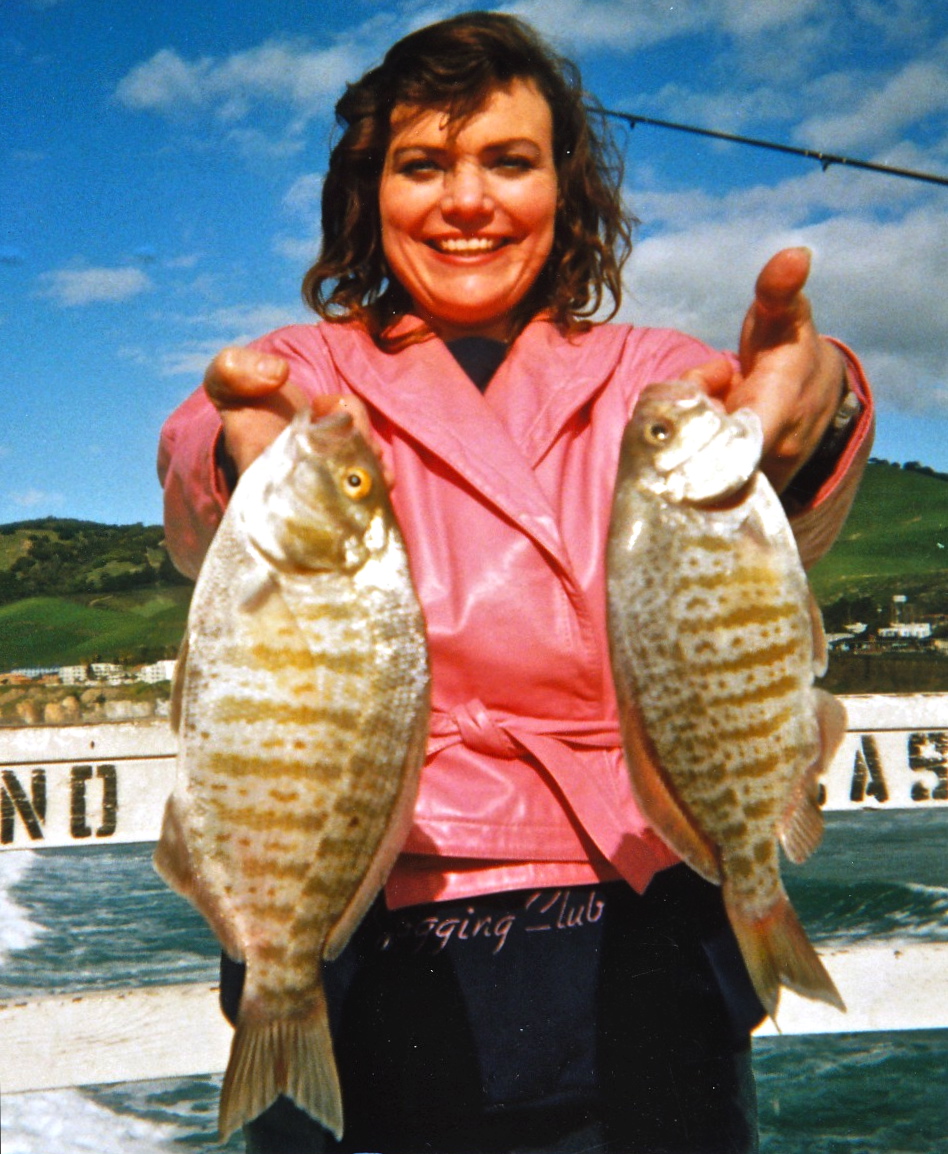
Two nice barred surfperch caught at the Pismo Beach Pier
Identification: Barred surfperch are one of three large surfperch with bronze or brassy bars on the side. Their coloring is brassy or silvery; olive-green to yellow-green on the back, silvery below; no red in their tail. Most have vertical yellow or gold bars on the sides, generally with a few spots between the bars; some in northern California lack the bars on the sides. The upper jaw extends slightly beyond the lower jaw with the lower edge of eye above the mouth. Dorsal spines are always shorter than the longest dorsal soft-rays.
Size: Up to 17 inches and 4 1/2 pounds (a 9-year-old fish); most caught from piers are less than 14 inches in length. Two fish share the title of California record fish at a weight of 4 lb 2 oz. One was caught in Morro Bay in 1995 and the second was caught in Oxnard in 1996. The IGFA World Record fish is listed at 4 Lbs 12 oz and was taken at Guadalupe, CA in 2016.
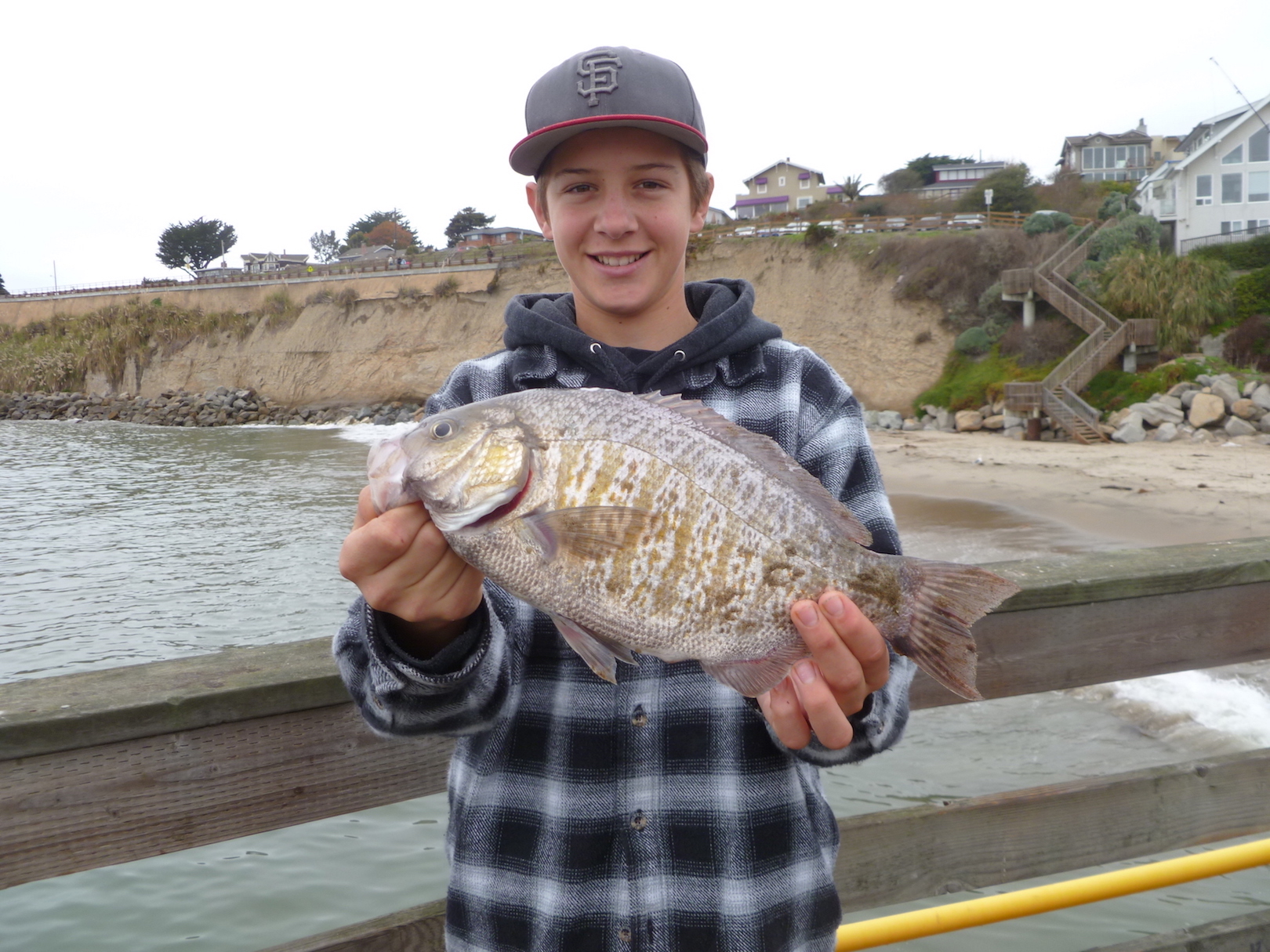
A nice barred surfperch from the Capitola Wharf
Range: Bahia Santa Rosalia, central Baja California, to Bodega Bay, northern California. Common from Punta Blanca, central Baja California, to San Francisco.
Habitat: Typically found in the surf zone, shallow-water, sandy-shore areas where markings blend with the wave churned environment (although some feel a large population lives in deeper water). Recorded to a depth of 262 feet. Primarily feeds on sand crabs; also bean clams and small mussels.
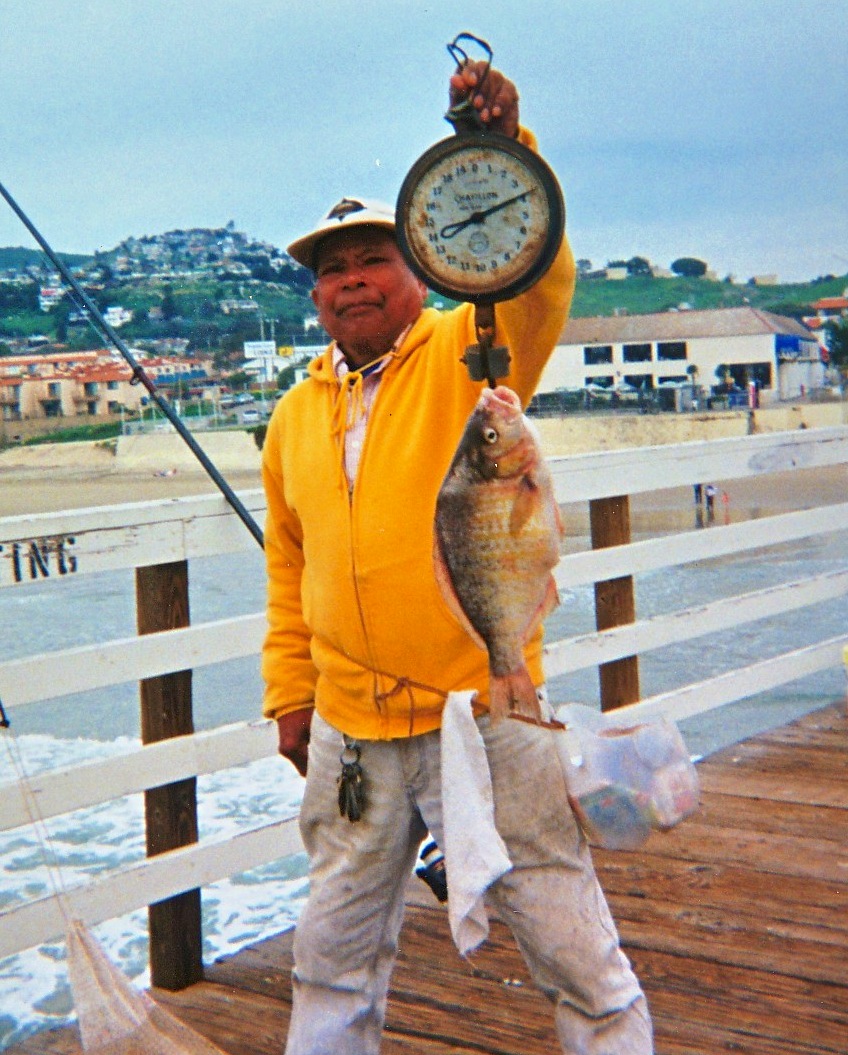
A large barred surfpech caught from the Pismo Beach Pier
Piers: Barred surfperch are common at almost all sandy-shore, oceanfront piers, north to the Pacifica Pier. Best bets: Imperial Beach Pier, Crystal Pier, Oceanside Pier, Huntington Beach Pier, Hermosa Beach Pier, Malibu Pier, Ventura Pier, Goleta Pier, Gaviota Pier, Pismo Beach Pier, Avila Pier, Cayucos Pier and San Simeon Pier. Quite a few are also taken further north, especially at the Seacliff Pier (when open), Santa Cruz Wharf, and the Pacifica Pier.
Shoreline: One of the main fish for sandy shore anglers in southern and central California anglers.
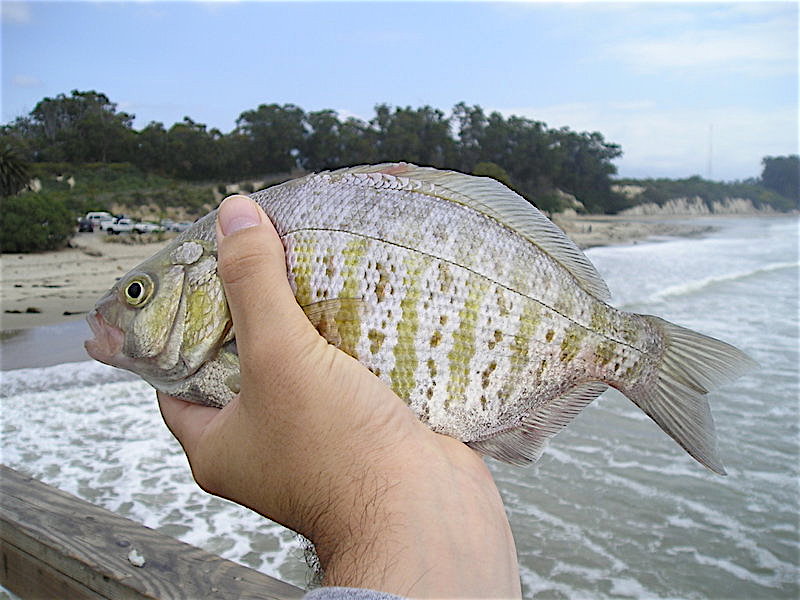
Barred Surfperch from the Goleta Pier
Boats: An inshore species rarely taken by boaters.
Bait and Tackle: By far, the best bait for these perch are live sand crabs, which make up 90% of the diet of barred surfperch. Live sea worms, mussels and clams would be the next best baits but barreds are landed on just about every bait imaginable (and many regulars use nothing but plastic grubs). Light to medium tackle can be used depending on conditions. Since the best water to fish is found just outside the first set of breakers, most anglers use a pyramid sinker (with whatever size sinker is needed to hold the bait in place). Line can be 8-to 20-pound test. A high/low leader is most often used with size 6 to 2 hooks. Barred surfperch are caught year-round, but December-January are the best months in southern California according to the California Fish & Game studies. The same studies found the Oceanside area to be the top producer of fish.
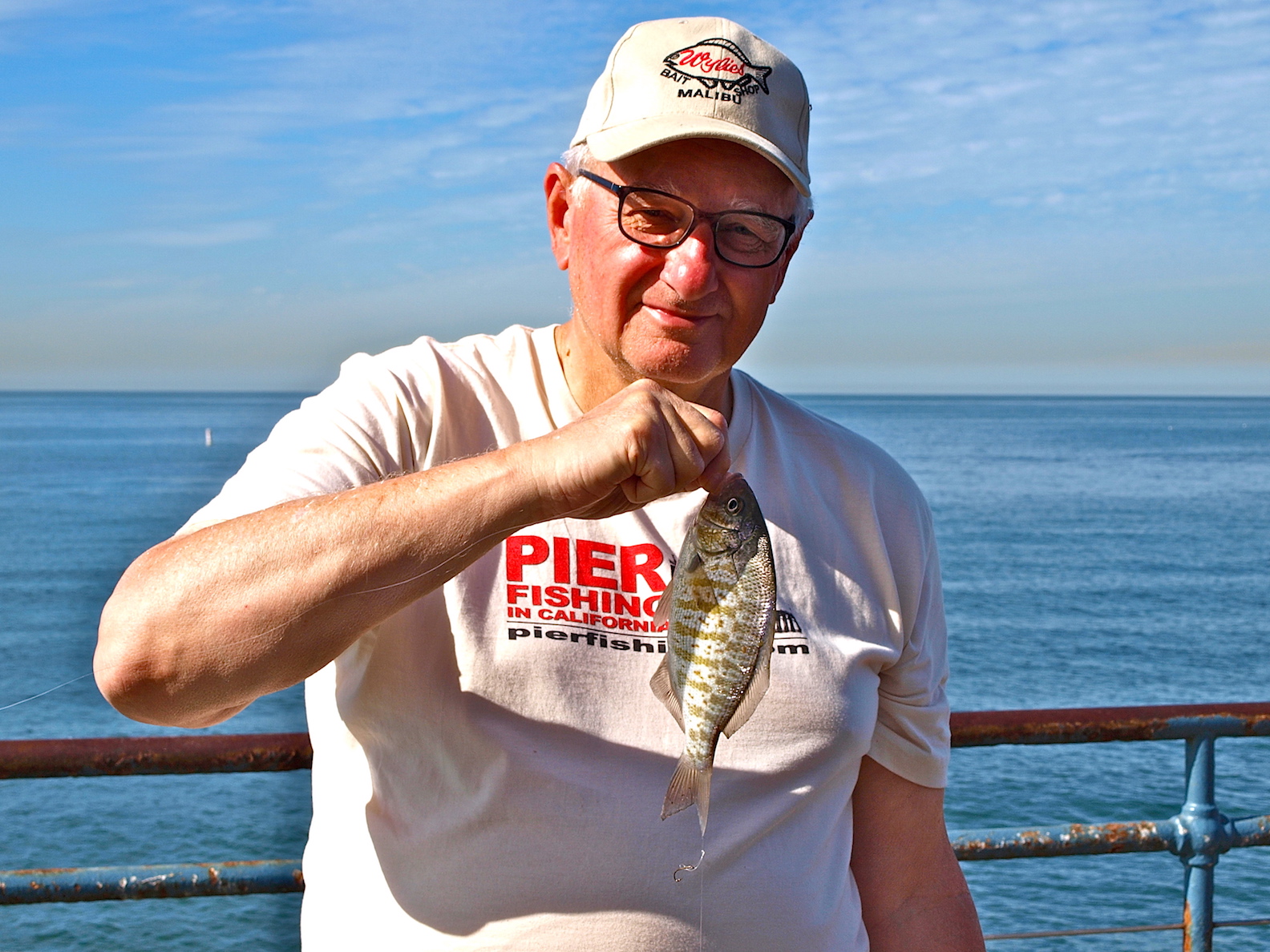
A small barred surfperch from the Santa Monica Pier caught by my fishing buddy Mike Granat
Food Value: Mild-flavored flesh with small flakes and a soft texture. The flesh is white colored and low in fat content. Can be cooked in any manner but most commonly fried.
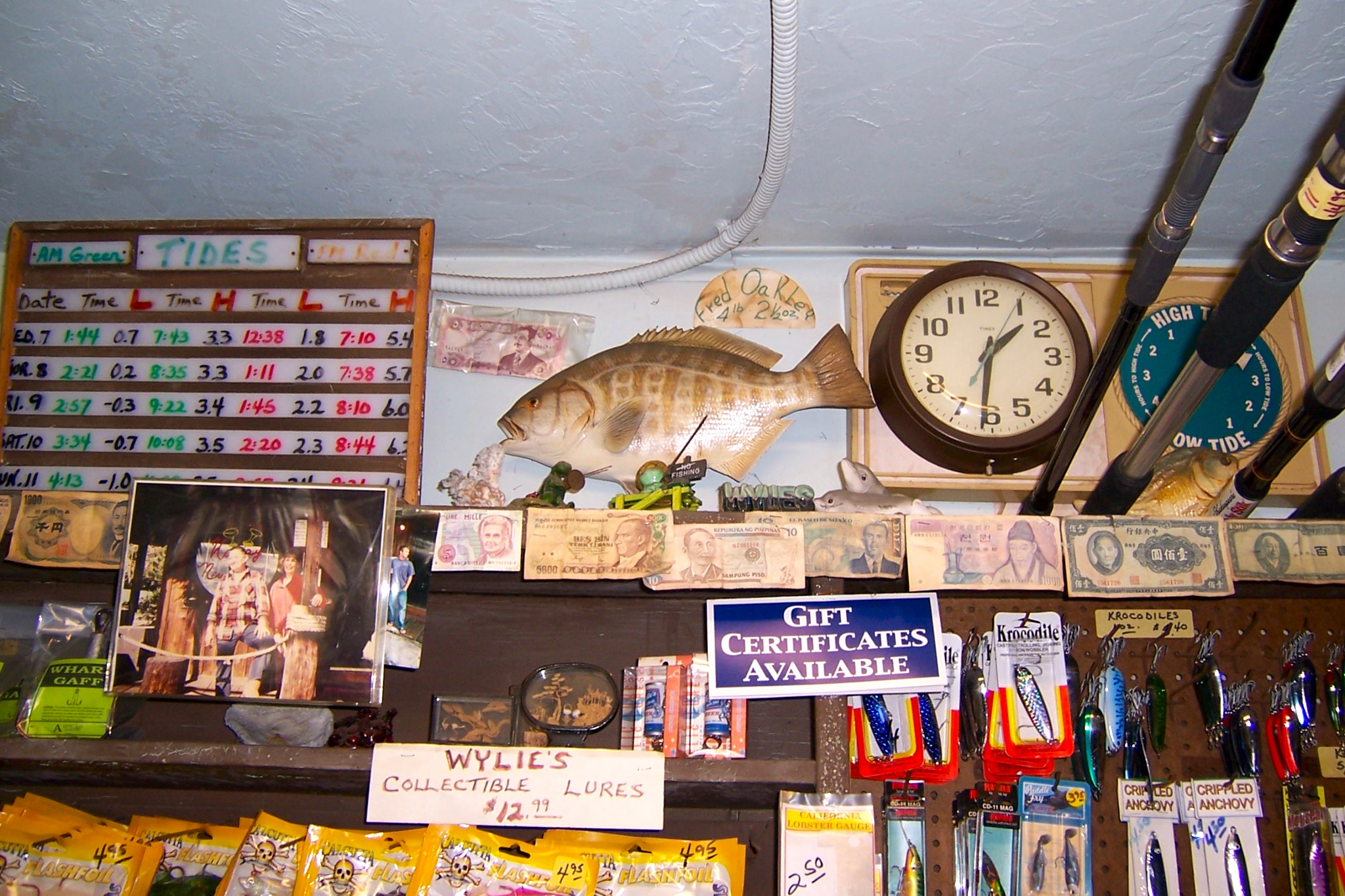
The California record 4 Lb 2 1/2 oz barred surfperch caught by Fred Oakley in 1996. It sits in Wylie’s Bait and Tackle in Malibu.
Comments: There are three species of surfperch that are large and which are predominate in the inshore surf area: barred surfperch, calico surfperch and redtail surfperch. Barred surfperch are the number one surf-area fish caught on southern California piers. North of Morro Bay, calico surfperch start to replace barred surfperch as the main inshore perch species; north of San Francisco, redtail surfperch replace the calico surfperch. At the Pacifica Pier it is occasionally possible to catch all three species on the same trip, a tri-fecta of sorts. Barred surfperch put up a spirited fight and are a favorite of surf fishermen.
Of note was a study done by the Department of Fish and Game in the Bolsa Chica-Hermosa Beach area between 2007 and 2009. One conclusion was that the number of barred surfperch in tha area had increased relative to the 90s. However, barred surfperch dropped from third to tenth place relative to other surf species collected.
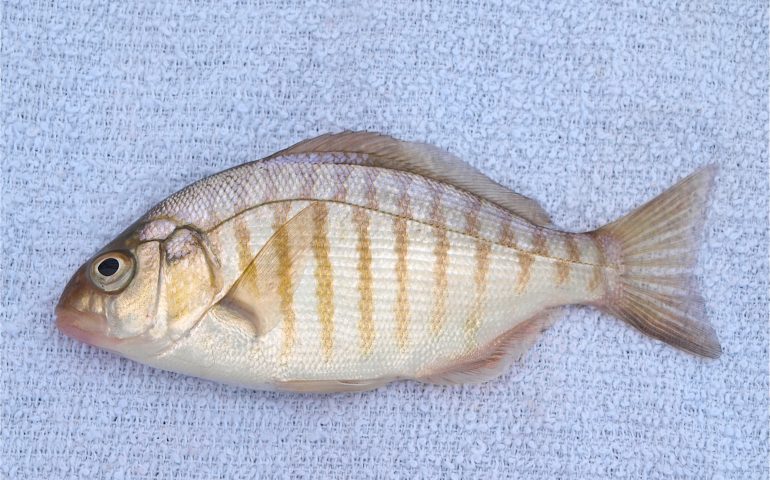
We catch them by Pacifica using market shrimps cut to size to fit
Size 2 or size 2 hooks using fish finder rigs or high lo rigs. We used 3 oz
Minimum torpedo weights due to stronger surf in the area. When
soft shell sandcrabs are available they are the best baits.